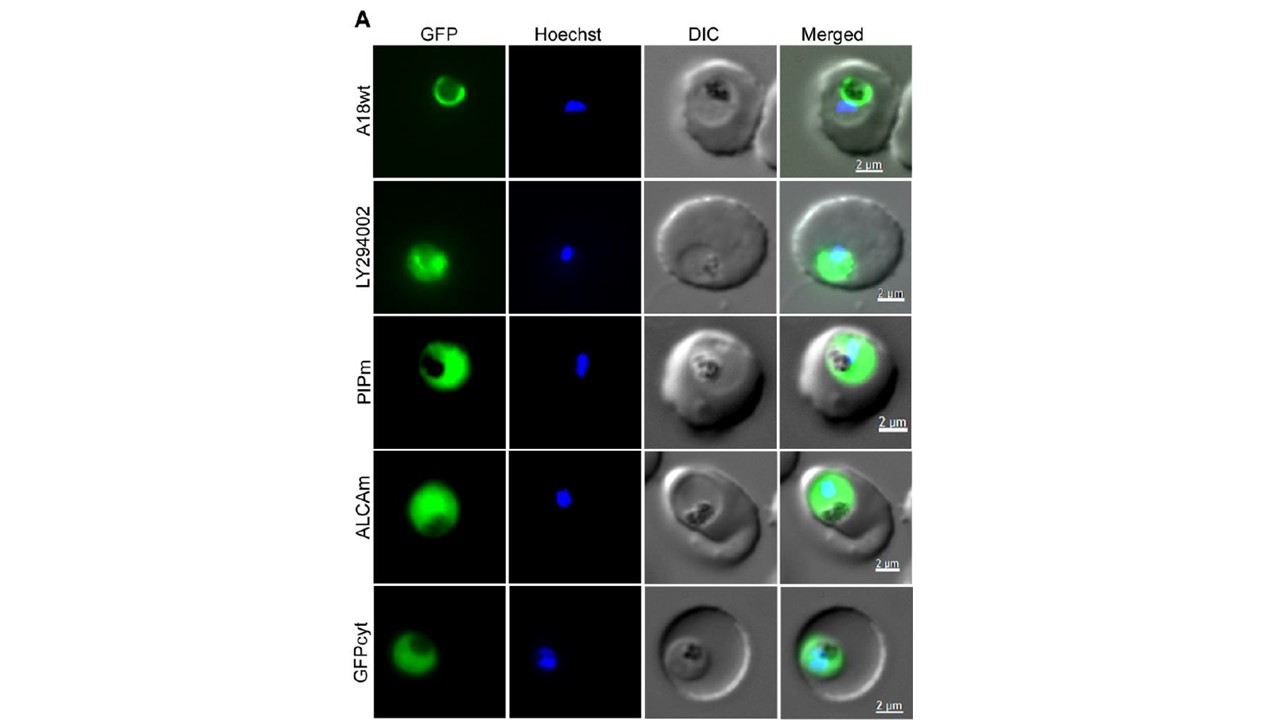PfAtg18 localizes to the food vacuole through interaction with PI3P. A. GFP/PfAtg18-expressing P. falciparum trophozoites were treated with DMSO (A18wt) or the PI3K inhibitor (LY294002) and assessed for PfAtg18 localization by live cell fluorescence microscopy. P. falciparum trophozoites expressing PfAtg18 mutants (PIPm and ALCAm) were assessed for the effect of mutations on PfAtg18 localization by live cell fluorescence microscopy. Parasites expressing GFP only served as a cytosolic localization control (GFPcyt). The panels from the left represent GFP signal (GFP), nucleic acid staining (Hoechst), boundaries of parasite and RBC (DIC), and the merge of all three images (Merged). As opposed to the DMSO control, the LY294002 treatment caused diffuse GFP/PfAtg18 localization all over the parasite, and mutations rendered the mutant proteins outside the food vacuole in cytoplasm just like GFPcyt. We first treated GFP/PfAtg18-expressing P. falciparum parasites with the PI3K inhibitor LY294002 and scored the parasites for PfAtg18 localization. The treatment resulted in a dose-dependent diffuse localization of PfAtg18 throughout the parasite in a significantly larger number of parasites (18.4% ± 2.8 at 1xIC50 concentration to 59.8% ± 0.9 at 5xIC50 concentration) than in control parasites (1.6% ± 1.1), suggesting that PI3P is critical for PfAtg18 localization to the food vacuole.
Sudhakar R, Das D, Thanumalayan S, Gorde S, Sijwali PS. Plasmodium falciparum Atg18 localizes to the food vacuole via interaction with the multi-drug resistance protein 1 and phosphatidylinositol 3-phosphate. Biochem J. 2021 12:BCJ20210001.
Other associated proteins
| PFID | Formal Annotation |
|---|---|
| PF3D7_0515300 | phosphatidylinositol 3-kinase |
